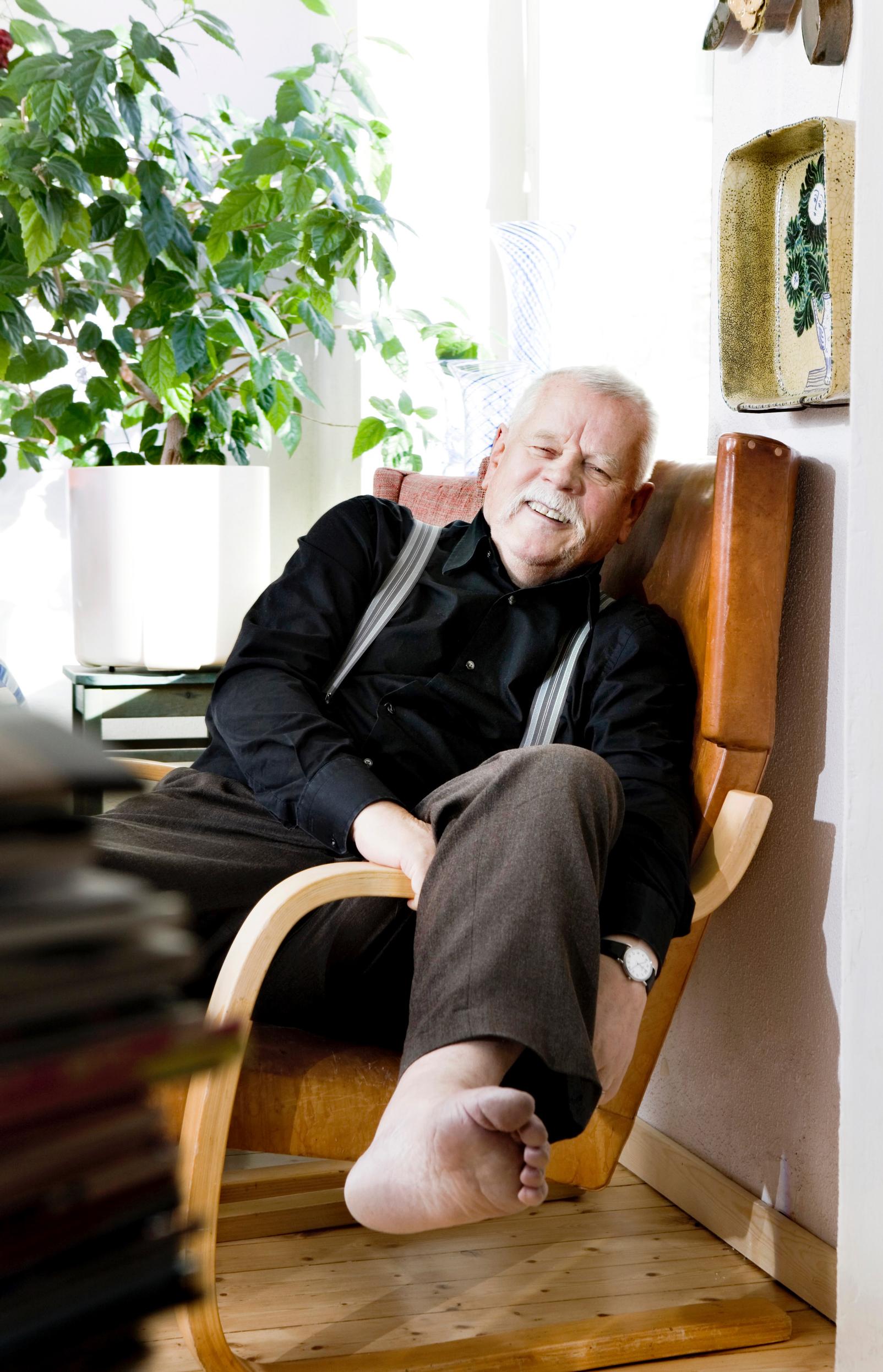
Oiva Toikka’s birds are soaring in value—do you know their story?
Over 40 years ago, Oiva Toikka helped glass take flight. These birds were once staple decorations in Finnish childhood homes, and we’re still eager to inherit them today. Some fascinate collectors all the way from Japan to South Korea.
Oiva Toikka’s glass birds have long been fan favorites, and they’re back in the spotlight. The more out-of-the-ordinary they are, the hotter they are on the market right now.
Many Finns grew up surrounded by Toikka’s birds, so much so that they took them for granted. The glass maestro’s birds are in the limelight once again, even among young adults. It’s no surprise that collectors from Japan and South Korea have embraced them, too. Over the years, Toikka’s birds have also done well in the tough U.S. market.
Designer Oiva Toikka
One of the most esteemed glass artists of our time, Oiva Toikka (1931–2019) is best known for his glass birds as well as his Kastehelmi, Flora, and Fauna dishware. While the public usually saw him as a master of glass, Toikka—who trained as a ceramicist—got his start at Arabia, then went on to design printed patterns for Marimekko, stage sets for the Finnish National Opera, and plastic items for the Italian brand Magis.

Oiva Toikka’s birds
Production of a classic
For over 40 years, Oiva Toikka’s glass birds were produced by the Nuutajärvi glass factory. After 220 years of operation, that factory closed in 2013, and production shifted to the Iittala glass factory.
Years of production
Oiva Toikka’s long career in glass began in 1963, when he became a designer at Nuutajärvi. He created the first birds, known as Flycatchers, in 1972. One of his latest is the 2018 annual bird, Pilot.
Colors of the birds
Oiva Toikka’s birds span every hue of the rainbow, including metallic tones. Even the earliest Flycatchers were produced with whatever glass colors happened to be available. Thanks to Kaj Franck’s influence, the Nuutajärvi glass factory had built exceptional know-how in colored glass since the 1950s, which inspired Toikka to capture the birds’ graceful forms in glass.
Bird sizes
They range from a few centimeters tall for the smallest birds to around thirty centimeters for Kiikkuri, Wild Swan, and Eagle.
Making the glass birds
Each glass bird is mouth-blown. Over the years, hundreds of different models have been produced.
The secret of their popularity
Many Finns recall Toikka’s birds from childhood, which adds nostalgia and sentiment to their visual appeal. Oiva Toikka’s boundless imagination and vivid color schemes have captured Finnish hearts. Each named bird has its own personality, so everyone can find the right match in color and character. Gather them into a flock, and they make a stunning display.
Did you know?
There are also second-quality birds floating around (marked II), which shouldn’t be overlooked, since the master himself once said they’re just more distinctive. Because each bird is handcrafted, every one is unique anyway.
Availability of the birds
Toikka’s glass birds have been made for decades and are still in production, so plenty are out there. Early pieces like Song Thrush and Flycatcher remain especially sought after. Owls are hot sellers at vintage shops. Collectors in Japan and South Korea track down special editions, like annual birds and corporate gift items. Rarities include the Flycatcher’s neodymium version and larger specimens like Rooster, Wild Goose, and Kiikkuri.
What makes Toikka’s birds valuable
Several factors affect their value: age, size, condition, rarity, and aesthetic appeal—like shape, color, or even whimsy. Some, such as the large Wild Goose, posed extra challenges in production. Generally, the bigger and rarer the bird, the steeper the price. Flip it over: a signature on the bottom ensures it’s authentic, while stickers or letter abbreviations may point to special corporate gift editions. Still, it’s possible for an authentic bird to be missing a signature.
The price of the birds
Most of Toikka’s birds sell for somewhere between 50 and 300 euros, while the priciest can fetch thousands. The earliest glass birds, like the Sieppari and Flycatcher from the early 1970s, are among the most coveted—even though they’re small, their value hovers around 500 euros. A Kiikkuri once sold at auction for as much as 5,000 euros.
Sources: Tuulikki Räikkönen, Astiataivas, and Birds by Toikka—Toikan linnut (WSOY). Images: A-lehdet image archive, Bukowskis, and Iittala.


